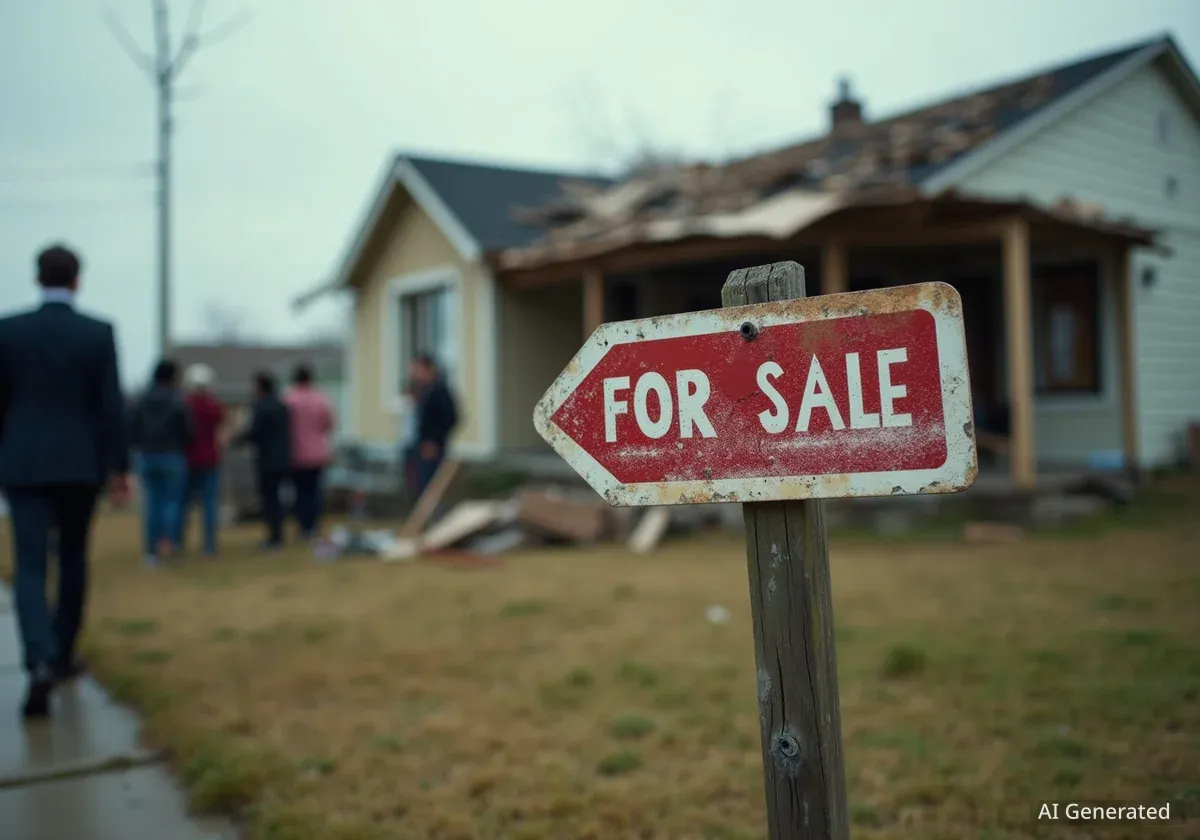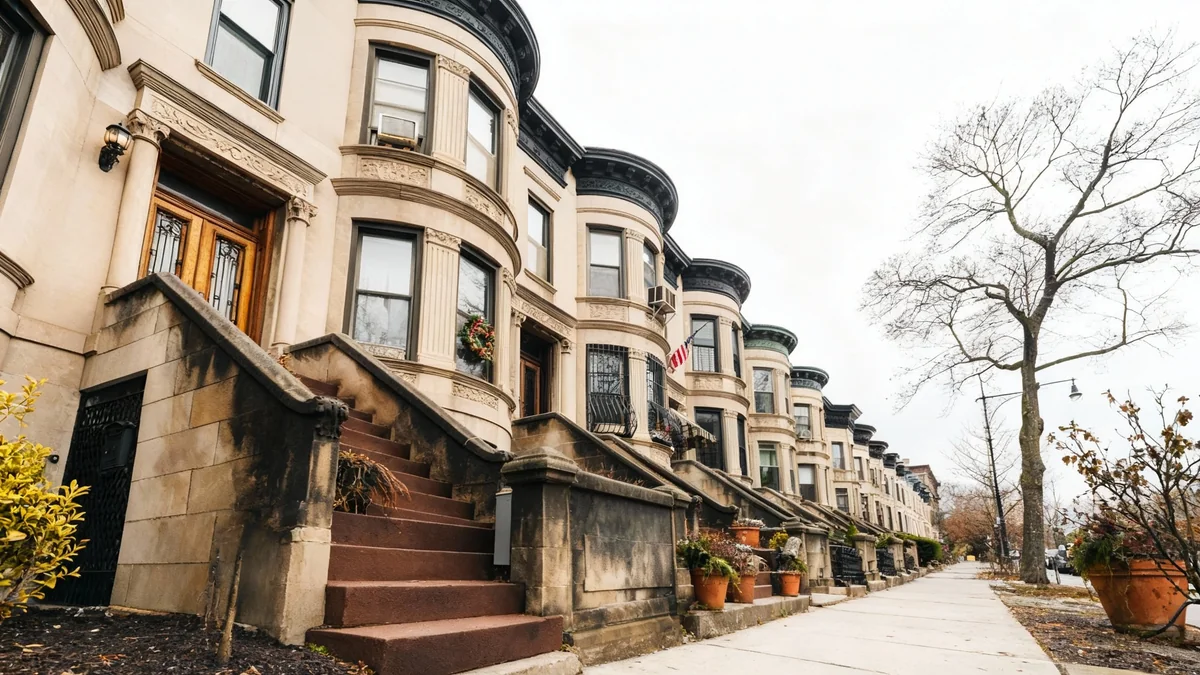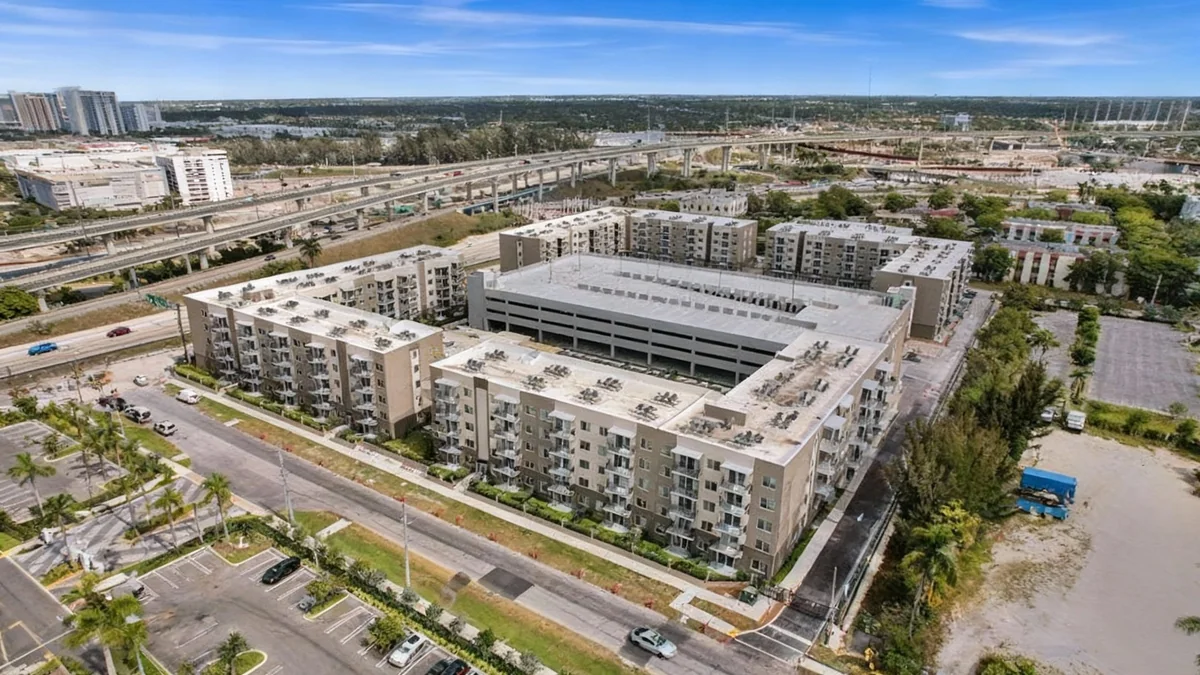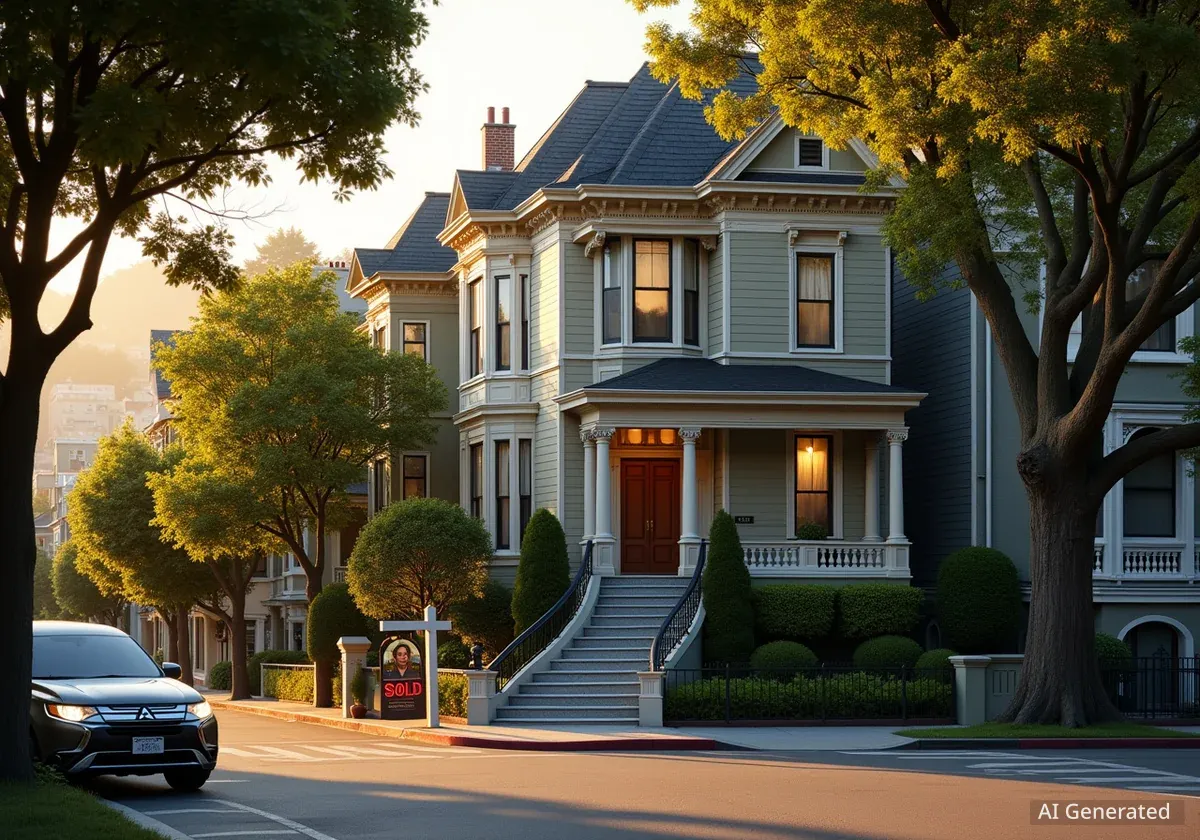Following severe natural disasters, communities face immediate challenges. Beyond the destruction, residents often encounter aggressive real estate speculation. Investors target damaged properties, seeking quick purchases at low prices. This practice can prevent long-term recovery for affected homeowners and renters.
Key Takeaways
- Real estate speculators target disaster-struck areas.
- Uninsured homeowners are particularly vulnerable to low cash offers.
- Some companies operate without proper registration or transparency.
- This phenomenon, called "disaster gentrification," displaces long-term residents.
- Policy changes are emerging to protect homeowners from predatory practices.
Tornado Devastates St. Louis Neighborhoods
On May 16, a mile-wide EF-3 tornado struck St. Louis, Missouri. The storm brought winds of 150 miles per hour. DeAmon White, a local resident, returned home to find his house severely damaged. The entire back wall had been blown off, windows were shattered, and much of his property was beyond repair. His mother, Bobbie White, who lives nearby, lost the third floor of her home. However, her front yard flower garden remained untouched.
This St. Louis tornado was one of 60 storms that affected six states over 48 hours in May. The storms caused 26 deaths and 168 injuries across Missouri, Illinois, Kentucky, Wisconsin, Minnesota, and the Carolinas. DeAmon and Bobbie White considered themselves fortunate, despite their losses. A neighbor sustained a leg injury from a pole that flew through his window.
Tornado Impact
- 60 tornadoes across six states in 48 hours.
- 26 fatalities and 168 injuries reported.
- St. Louis storm was an EF-3 with 150 mph winds.
Aggressive Offers Begin Quickly
The morning after the tornado, DeAmon White started receiving phone calls. "They were aggressively going at it," he stated. These calls continued for two weeks, with approximately half a dozen calls arriving daily. Both DeAmon and Bobbie White described the callers as "vultures." Speculators used various methods: flyers, text messages, and phone calls.
In White's West End neighborhood, an estimated 63 percent of renters and 49 percent of homeowners lack insurance. For many residents in North St. Louis, their home represents their most significant asset. They often do not have the immediate funds needed to rebuild without insurance. When federal aid is slow to arrive, fast cash offers can appear to be a necessary solution.
"They were aggressively going at it," DeAmon White said about the callers.
One text message sent to a homeowner north of the tornado's path on August 4 read: "Hi, this is Paul with H.B. LLC. Touching base with you … is this Steven?" Grist attempted to contact several of these numbers. Most did not accept return calls or texts. One number did connect to a woman who sounded like she was in a call center. She stated, "We’re a ‘we buy homes’ company," but declined to provide the company's name.
Vulnerability in Disaster Zones
Many areas affected by natural disasters have high rates of uninsured properties. This makes residents more susceptible to low-ball offers from investors. The urgent need for funds to relocate or rebuild can override long-term financial interests.
Hurricane Helene Spurs Similar Tactics in North Carolina
Eight months before the St. Louis tornado, Hurricane Helene impacted Fairview, North Carolina. The storm caused hundreds of landslides, destroying homes and vehicles. It resulted in 15 deaths in Gina Miceli's community. In the months following the hurricane, Miceli received constant texts asking if she would sell her family's two plots of land.
Miceli described the texts as "chummy," designed to sound like the sender already knew her. She found the approach "very, very creepy." One text on July 9 simply stated, "Let me know your price," and was signed "Bella." Another text, sent two weeks later, read: "Hi there Gina, hope you’re having a great day. My name is Christine, I am a land buyer. I’m reaching out to see if you have any plans to sell the lot." This text was signed by "Twin Acres."
Twin Acres is not a registered real estate broker. Grist's attempt to contact the number for Twin Acres received no response. Miceli occasionally responds to these messages, sometimes with frustration. She has no plans to leave, as she is raising her family in the home her husband's grandparents purchased and owns a local brewery.
Understanding Disaster Gentrification
Experts refer to this trend as "disaster gentrification." This occurs when real estate investors enter a disaster-stricken area to purchase damaged properties at reduced prices. Samantha Montano, a professor of emergency management and author of Disasterology, witnessed this firsthand in New Orleans after Hurricane Katrina.
After Katrina, many residents displaced from areas like the Lower Ninth Ward lacked the resources to return. Speculators quickly moved in. Some landowners became wealthy by selling their properties to out-of-state developers. These developers aimed to rebuild and then resell the properties for profit. "The issue of gentrification in New Orleans was there from the beginning," Montano stated. Groups warned about this and advocated for housing policies to prevent it.
Twenty years later, New Orleans' demographics have changed. Lower-income and Black residents were displaced, replaced by wealthier, often white, new residents. "Certainly that is all very much intertwined in the recovery and in who had access to the resources to return and rebuild — and who didn’t," Montano explained. This highlights how access to resources influences who can recover and return.
Key Aspects of Disaster Gentrification
- Rapid Displacement: Residents unable to afford rebuilding are forced to sell.
- Investor Influx: Real estate firms buy damaged properties for low prices.
- Demographic Shift: Original residents are replaced by new, often wealthier, populations.
- Profit Motive: Investors aim to flip properties for significant gains.
Corporate Purchases and Unregulated Markets
After the Eaton Fire in Altadena, California, earlier this year, limited liability corporations (LLCs) made half of all home purchases. This figure is nearly double their typical representation in individual home sales, according to Dwell, a home design news site. Just six companies, including Ocean Development Inc. and Black Lion Properties LLC, dominated these transactions in Altadena. They spent millions buying destroyed properties in historically Black neighborhoods.
Identifying these companies can be difficult. They often contact potential sellers using temporary phone numbers or names not directly linked to registered corporations. The value of land in disaster zones often recovers quickly. This allows buyers to resell the land or homes, sometimes without making any repairs, for a profit. As climate change increases the frequency of severe natural disasters, "disaster investors" are positioned to earn larger profits. Communities like North St. Louis may bear the brunt of these practices.
Justin Stoler, a University of Miami researcher, published a paper on hazard gentrification. He noted that this phenomenon differs from standard gentrification due to its speed. "It’s typically happening in a very punctuated, short-term manner. It doesn’t necessarily take years and decades to roll out."
"People’s lives are completely upended, and they’ve got to make difficult choices," Stoler said. "And opportunistic entities, companies, investors try to step in and get a good deal. You end up with this system where people are exploiting the misfortunes of others."
Pre-Existing Vulnerabilities and Post-Disaster Exploitation
DeAmon White observed signs of gentrification in his St. Louis neighborhood even before the tornado. A community barbershop was replaced by a trendy restaurant. A former school became an upscale apartment building for law students. He noted "just a lot of white folks moving into what they used to call ‘the hood.’" Signs reading "WE BUY UGLY HOUSES" were common before the storm. These indicate real estate wholesalers and house-flippers looking for quick sales. Their frequency and aggressiveness increased after the tornado.
It is too early to determine the full extent of land sales resulting from the St. Louis tornado. However, Zillow search results show a clear trend. At least 10 severely damaged homes in the tornado's path have appeared for sale on the platform. These listings are often marketed as investment opportunities, not as homes for local residents.
For example, 4641 Maffit Avenue is listed with "investment potential" for rehab or brick salvage, with a starting bid of $20,000. Another property, 4236 East Sacramento Avenue, in the historic Ville neighborhood, is advertised as an "Investor Special!! Tornado damaged property" for $30,000.
Slow Recovery and Difficult Choices
One hundred days after the tornado, many St. Louis neighborhoods remain extensively damaged. Debris still litters streets and yards. Blue tarps cover caved-in roofs. Windows are boarded up, even as temperatures drop. Community organizations, such as The People’s Response, mobilized 10,000 volunteers to provide aid. They estimate that over 2,000 St. Louis households still need housing assistance.
Despite a strong volunteer network, $30 million from an NFL settlement for tornado relief, and slow-arriving FEMA aid, homeowners have faced months of uncertainty. They must make difficult decisions about rebuilding. Deserai Anderson Crow, a University of Colorado-Boulder researcher, notes this pattern is common after extreme weather events. Often, those who rebuild are landlords seeking renters, not individuals intending to live in the homes.
"It’s a predatory renting cycle," Crow said. "These huge industrial-rental landlords are trying to snap up disaster-affected homes because they assume, correctly, that a lot of people want to get out from under those mortgages as quickly as possible, and that they just don’t have the emotional bandwidth or financial bandwidth to deal with rebuilding."
Bobbie White’s damaged home was built in 1901. St. Louis was a thriving Mississippi River transit hub known for its strong, high-quality brickmaking industry. Her home and others on her block are made from these durable, century-old bricks. DeAmon White lamented that new structures would likely be less unique and sturdy, yet far more expensive, putting them out of reach for many current residents.
Legal Challenges and Potential Solutions
Stacey Sanders, president of the St. Louis Association of Realtors, has received numerous reports of rapid post-disaster sale offers. These offers often present red flags. Multigenerational homes, for instance, may lack a clear title, or the title might be in the name of a deceased family member. Resolving these title issues can take years. Many storm-impacted multigenerational homes fall into this category, leaving their owners stuck. Without a clear title, accessing FEMA benefits, filing insurance claims, and legally selling the property become extremely difficult.
Sanders experienced similar offers after hail damaged her own home and car in March. She received letters, door hangers, and visits from individuals offering repairs or home purchases. As a real estate professional, she could access resources and recover her property. However, she worries about others who may not have the same knowledge or access. "It might be the easiest and the quickest way," Sanders said, "but it’s not always the best way to go." She added that most making these offers are not motivated by charity but by the opportunity to exploit "desperate people" by buying property below its true value.
Options exist to curb this mass sell-off. Crow suggests providing bridge funding for a few months to help residents navigate the rebuilding process. Another approach involves deterring predatory buyers. In June, the Ohio Senate passed a bill requiring real estate wholesalers to inform homeowners if they are selling their homes for less than market value. Pennsylvania enacted a similar law in January.
However, the market in Missouri remains unregulated at both local and state levels, according to Peter Hoffman of Legal Services of Eastern Missouri. This nonprofit provides pro bono services to tornado victims. Hoffman noted that these issues of redlining, displacement, and exploitation existed before the tornado, but the storm brought them into sharper focus. DeAmon White, speaking from his restaurant, Ozell’s Kitchen and Food Mart, reflected on the past months. Rebuilding his insured home is hard; he does not expect it to be livable until February or March of the following year. Because of a partially amputated foot, he stays mostly on his mother’s first floor. A neighbor still lives in a camper. Others on his block chose to sell. Only four families remain on his street.
On August 21, Bobbie White received an offer to buy her home for about two-thirds of its worth. DeAmon White urged those facing gentrification to understand their property's value. "I really would like the people who are in the line of gentrification to realize what it is they have, and if they can, don’t sell out," White said. "I know money talks, and when you’re in a stressful situation you got to do what you got to do, but resist, you know?"





